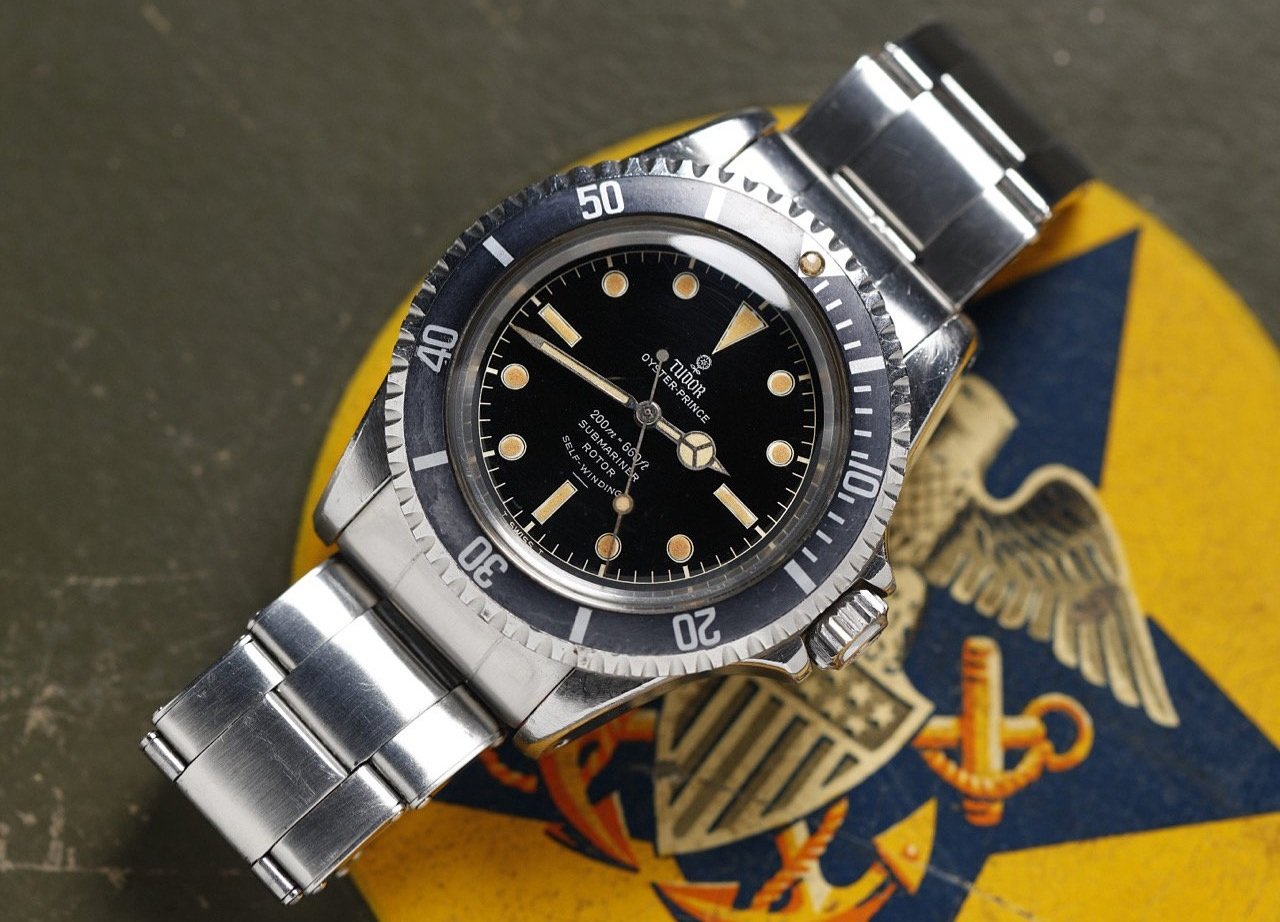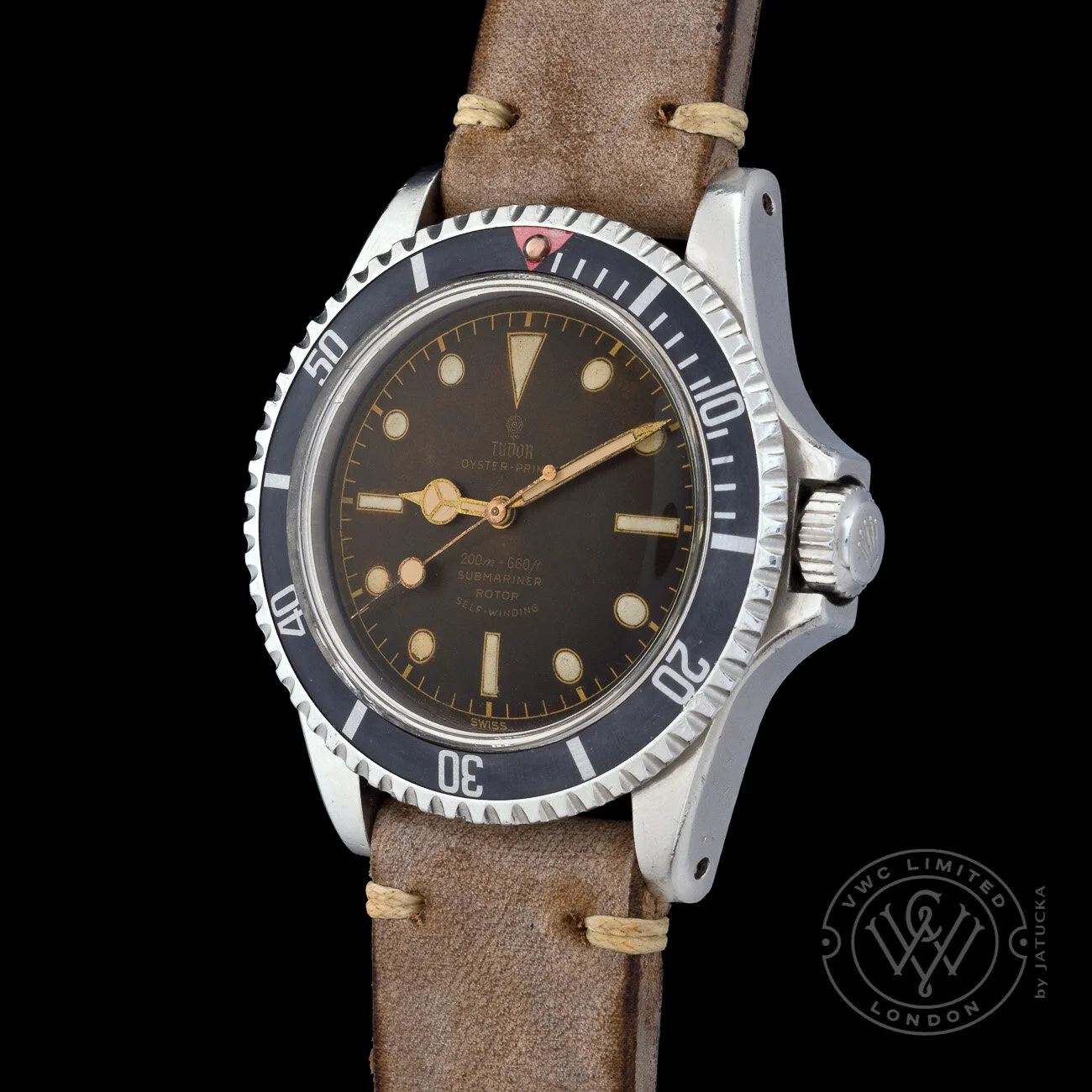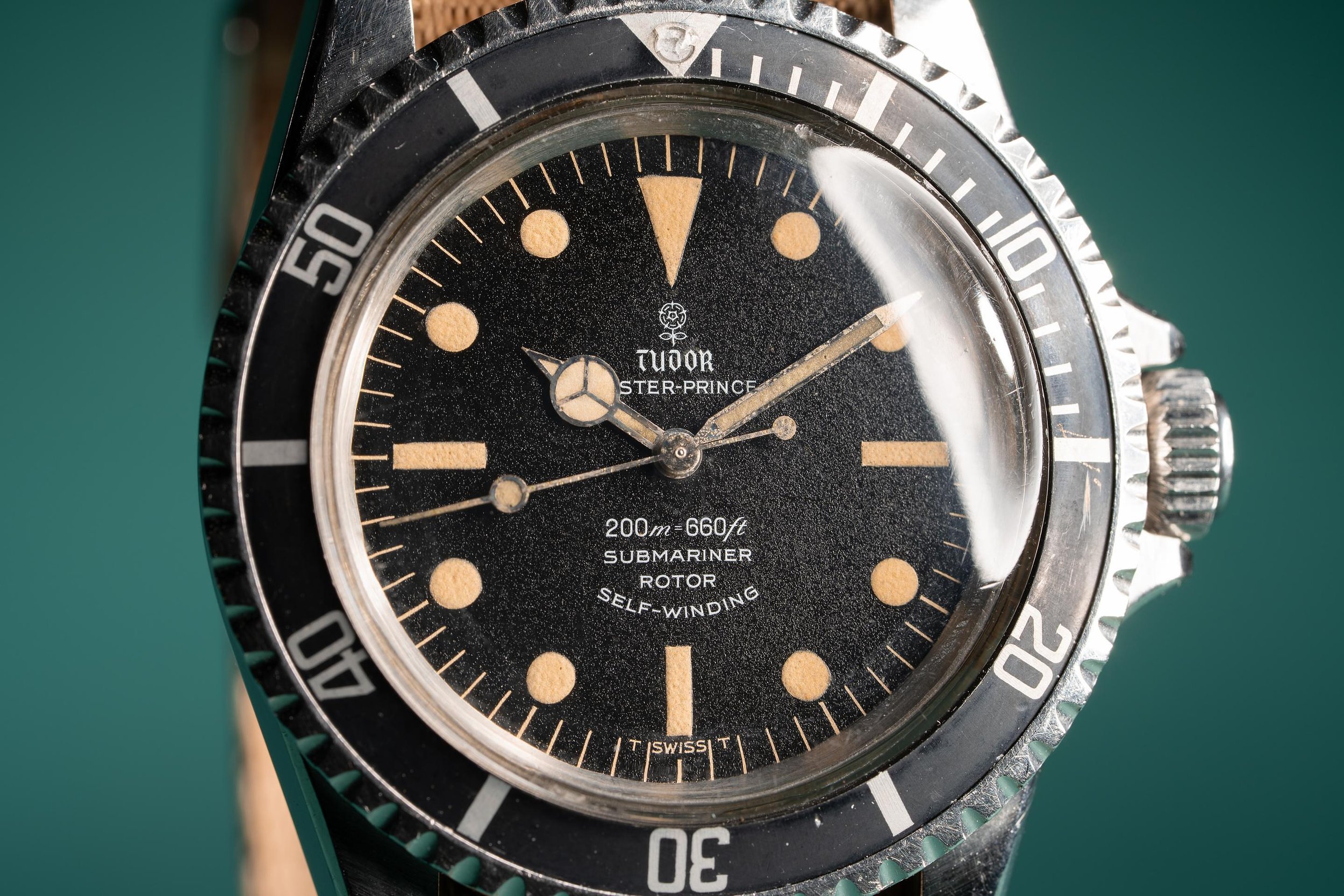7928
Tudor introduced the ref. 7928 in 1959, and it was in continuous production for nearly 10 years. With the 7928, Tudor brought forth major changes including the introduction of crown guards and a larger case size of 39mm (up from the 37mm case of the 7924). Over the production run, we witness several variations in the case and dial, making this the most diverse reference in Tudor’s submariner lineup. One constant being Tudor's decision to keep the modified Fleurier cal. 390 from the previous references.
Case - As mentioned earlier, the 7928 was the first Tudor Submariner to have crown guards, which evolved several times over the span of its production. A key influence in the design of the case was the French Navy. The major issue with the previous reference (7924) was that the large, exposed 8mm crown was constantly getting hit when underwater. This resulted in water ingress, thus compromising the integrity of the watch. To solve for this, Tudor decided to introduce crown guards and also increased the case size to 39mm, resulting in a more robust, reliable watch. The caseback was stamped “Original Oyster Case By Rolex Geneva.”
The first 7928 was fitted with the extremely rare Square Crown Guards, and the general consensus amongst collectors that only 100 or so were made. Following the square crown guards, we see the Eagle Beak which was also produced for a very short period. The Eagle Beak's guards are much more tapered, terminating in a sharp point. After these two rare crown guard variations, Tudor transitioned to Pointed Crown Guards and then finally to Rounded Crown Guards.
From Left to right: Square Crown Guards, Eagle Beak, Pointed Crown Guards and Rounded Crown Guards
Hands - Early 7928’s were fitted with gilt hands that lasted until 1963, in tandem with the gilt print dial production. Then, as Tudor transitions to the silver print dials, we see the introduction of steel hands. Over the years we also see the “lollipop” second hand. However, there is no general consensus as to when they came out of the factory. Please note the hands found on the 7928 are not interchangeable with the 5513 due to difference in mounting post size variations.
Dial - Unlike early submariners produced by Rolex in the '60s, Tudor mainly opted for matte dials. One interesting characteristic of this period of matte dials is the satin-like finish they developed. In this reference, we also find exclamation, underline dials, and even a glossy dial that was produced for a very brief period in the mid '60s.
Rolex and Tudor used exclamation and underline dials to signify the transition of radium to tritium in the early '60s. The first to indicate this transition was the exclamation dial, which should emit a much lower level of gamma radiation when compared to earlier examples. Immediately following the exclamation dial, Tudor began adding an underline to the dials which emits an even lower amount of radiation. Exclamation dials can be found from approx. 33xxxx to 37xxxx. Underline dials are seen from approx. 40xxxx to 43xxxx.
The printed text on the dials remained the same over the years. In the upper-half we find the Tudor rose and “Oyster-Prince” immediately below. The lower half of the dial has four lines and reads “200m = 660ft” followed by “SUBMARINER” then “ROTOR” and finally, “SELF-WINDING.” The upwards curve of “SELF-WINDING” is a collector favorite and has been a design inspiration for modern Tudors.
Please note that the provided serial ranges below are estimates and are not definitive
MK1
Gilt Chapter ring
Gilt Print
Gilt Hands
SWISS only
Square Crown Guards
Red Triangle Insert
Approx. serial range: 305xxx
Notes: There is a general consensus that only 100 or so Square Crown Guard examples exist.
MK2
Gilt Chapter ring
Gilt Print
Gilt Hands
SWISS only
Eagle Beak Crown Guards
Red Triangle Insert
Approx. serial range: 305xxx
Notes: MK2 shared the same dial design as the MK1 but with Eagle Beak crown guards. Speculation is that the Eagle Beak was cut down from Square Crown Guards and that only a couple hundred were produced.
MK3
Gilt Chapter Ring
Gilt Print
Gilt Hands
SWISS Only
Pointed Crown Guards
Approx. serial range: 325xxx to 409xxx
Notes: This is the first time we see Pointed Crown Guards. Exclamation dials are seen in this range, as well as the beginning of underline dials.
MK4
Gilt Chapter Ring
Silver Print
Steel Hands
SWISS only
Pointed Crown Guards
Approx. serial Range: 40xxxx to 409xxx
Notes: This is the first time we see silver print. The silver print dials were first used on the Pointed Crown Guard before transitioning to a Rounded Crown Guard case. Underline dials are found on the MK4.
MK5
Gilt Chapter ring
Silver Print
Steel Hands
T Swiss T
Rounded Crown Guards
Approx. serial Range: 409xxx to 568xxx
Notes: Underline dials are found in this serial range.
MK6
Open Chapter
White Print
Glossy Dial
T SWISS T
Rounded Crown Guards
Gilt Hash Marks
Approx. serial range: 506xxx to 598xxx
Notes: Yes, Tudor manufactured a glossy dial for a very brief period. Most of the examples found are dated to 1966 and have ”VI 66” stamped within the case back. However, there have been several glossy examples to surface that are dated to 1965 (with 1965 case backs), a few of which came directly from the original owner. This was the first time Tudor introduced a glossy dial in their submariner lineup. Tudor would revert back to matte dials for the remainder of the 7928 production and then re-introduce glossy dials in the 1980’s. Lastly, with the introduction of the open chapter, the print transitions from silver to white.
MK7
Open Chapter
White Print
T SWISS T
Rounded Crown Guards
Gilt or white Hash Marks
Approx. serial range: 570xxx to 598xxx
Notes: This is the last dial variation we see of the 7928 before Tudor transitions to the 7016/0 & 7021/0.
SERVICE DIALS
The shield dial was a common service replacement for the 7928, coming in both a two and four line version.






















